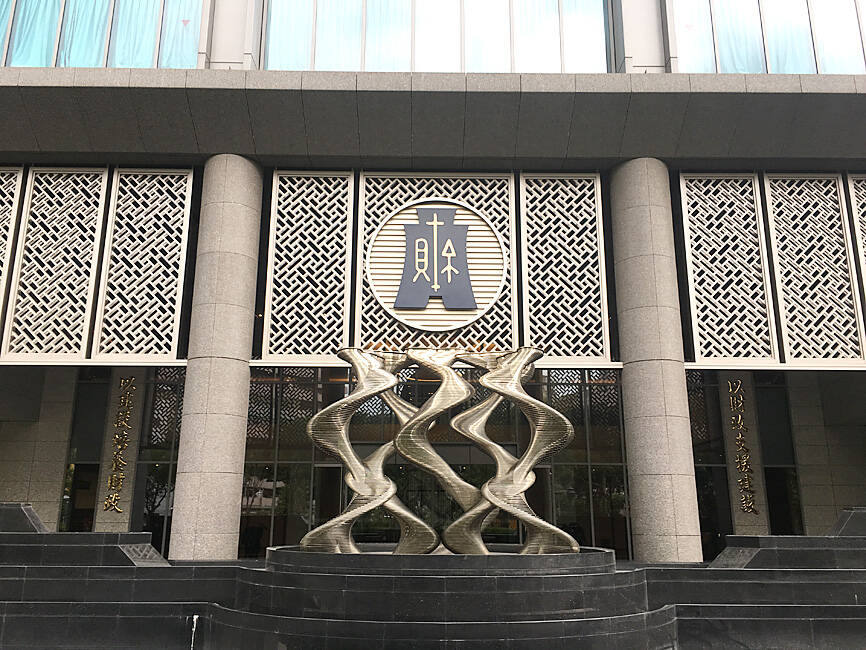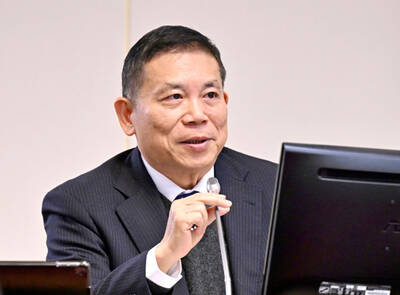Taiwan’s tax revenue as a percentage of GDP was 14.7 percent last year, a 0.1 percentage point increase from the previous year and the highest in 26 years, the Ministry of Finance said on Friday.
The tax-to-GDP ratio gauges the proportion of a nation’s total output collected by the government through taxation and indicates the degree to which a government controls resources.
Taiwan’s ratio has hovered between 11 and 14 percent since 2000, after reaching an average of 16.5 percent from the 1980s to the 1990s, ministry data showed.

Photo: Clare Cheng, Taipei Times
Last year’s figure surpassed Singapore’s 13.7 percent, but was lower than the US’ 19.1 percent, South Korea’s 20.4 percent and Japan’s 21.2 percent, the ministry said in a report, adding that the figure ranges from 20 percent to 44 percent for European countries.
The average tax burden per capita last year was estimated at NT$159,348 (US$4,876), a NT$11,478 increase from the previous year and a new record high, it said.
Boosted by stable economic growth, wage increases and rising stock market turnover, total tax revenues collected last year were NT$3.73 trillion, a record high, and exceeded the government’s budgeted amount by NT$497.2 billion, the ministry said.
Including social security contributions, tax-to-GDP ratio stood at 20.5 percent last year, still lower than the US’ 25.2 percent, South Korea’s 28.9 percent, Japan’s 34.4 percent, Germany’s 38.1 percent and France’s 43.8 percent, it said.
Social security contributions, including labor and health insurance, have continued to rise in the past few years to comply with global trends. It reached NT$1.39 trillion last year, an increase of NT$37.3 billion, or 2.8 percent, compared with 2023, the ministry said.
From 2013 to 2023, the tax-to-GDP ratio including social security contributions had increased in 14 of the 20 major countries, and the average growth of 2.3 percent in Taiwan over that period was a mild increase compared with others, it said.

Taiwan will prioritize the development of silicon photonics by taking advantage of its strength in the semiconductor industry to build another shield to protect the local economy, National Development Council (NDC) Minister Paul Liu (劉鏡清) said yesterday. Speaking at a meeting of the legislature’s Economics Committee, Liu said Taiwan already has the artificial intelligence (AI) industry as a shield, after the semiconductor industry, to safeguard the country, and is looking at new unique fields to build more economic shields. While Taiwan will further strengthen its existing shields, over the longer term, the country is determined to focus on such potential segments as

UNCERTAINTY: Innolux activated a stringent supply chain management mechanism, as it did during the COVID-19 pandemic, to ensure optimal inventory levels for customers Flat-panel display makers AUO Corp (友達) and Innolux Corp (群創) yesterday said that about 12 to 20 percent of their display business is at risk of potential US tariffs and that they would relocate production or shipment destinations to mitigate the levies’ effects. US tariffs would have a direct impact of US$200 million on AUO’s revenue, company chairman Paul Peng (彭雙浪) told reporters on the sidelines of the Touch Taiwan trade show in Taipei yesterday. That would make up about 12 percent of the company’s overall revenue. To cope with the tariff uncertainty, AUO plans to allocate its production to manufacturing facilities in

COLLABORATION: Given Taiwan’s key position in global supply chains, the US firm is discussing strategies with local partners and clients to deal with global uncertainties Advanced Micro Devices Inc (AMD) yesterday said it is meeting with local ecosystem partners, including Taiwan Semiconductor Manufacturing Co (TSMC, 台積電), to discuss strategies, including long-term manufacturing, to navigate uncertainties such as US tariffs, as Taiwan occupies an important position in global supply chains. AMD chief executive officer Lisa Su (蘇姿丰) told reporters that Taiwan is an important part of the chip designer’s ecosystem and she is discussing with partners and customers in Taiwan to forge strong collaborations on different areas during this critical period. AMD has just become the first artificial-intelligence (AI) server chip customer of TSMC to utilize its advanced

While China’s leaders use their economic and political might to fight US President Donald Trump’s trade war “to the end,” its army of social media soldiers are embarking on a more humorous campaign online. Trump’s tariff blitz has seen Washington and Beijing impose eye-watering duties on imports from the other, fanning a standoff between the economic superpowers that has sparked global recession fears and sent markets into a tailspin. Trump says his policy is a response to years of being “ripped off” by other countries and aims to bring manufacturing to the US, forcing companies to employ US workers. However, China’s online warriors